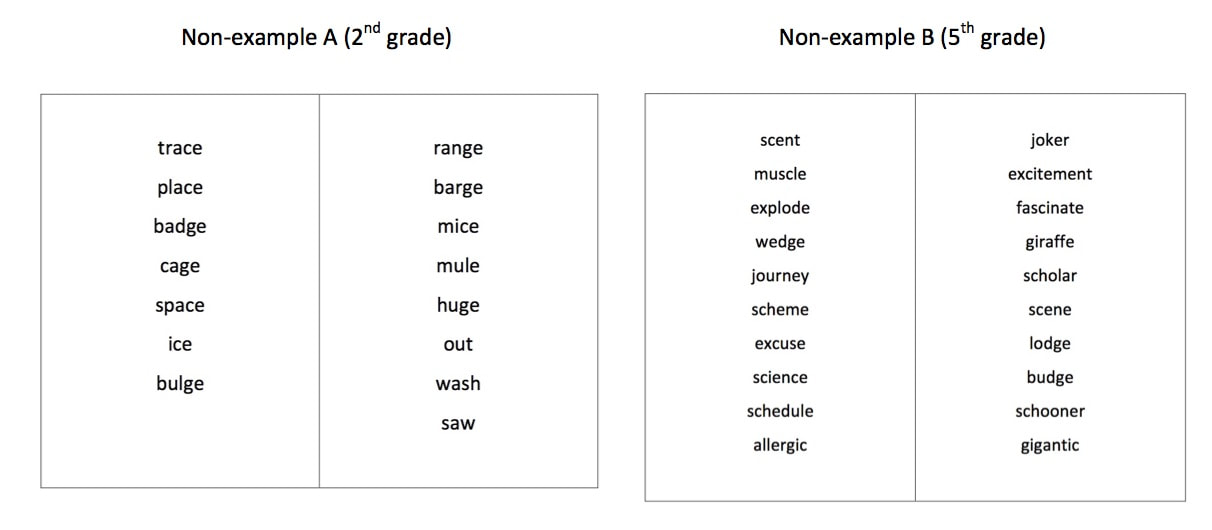|
Hard to believe it’s 2018! Onward and upward into the new year. One of my recent Tweets generated some discussion about spelling word lists, so my take on a spelling word list is the topic for this blog. And I’ll follow up with a companion piece in a couple of weeks. But before I launch into spelling lists, I want to point out that I’m writing this blog to coincide with the launch of my YouTube Channel, creatively titled “The Mark Weakland Channel.” The Mark Weakland Channel doesn’t feature sci-fi fantasies, comedy specials, or shows about British royalty. It will feature 5 to 7-minute video clips of me discussing topics related to all things literacy. Right now there’s only one video! But I’m learning. I’m calling my first series of videos “Development from the Drums” (because its alliterative and because I’ll be sitting behind my drum set to up the entertainment value). So please go to YouTube and listen as I yak about spelling and lay down a beat. Here’s the link: http://bit.ly/Spllist1. And now, thoughts on spelling word lists, starting with my idea of a master spelling word list. Within my philosophy of spelling, the master spelling list is a key component of instruction. Once created, its functions are many. It’s deep reservoir of words enable the creation of differentiated spelling lists. It provides words for modeling strategies and running activities. And it gives students many examples of just a few spelling features, thereby helping kids focus on sounds and letters, patterns, and the meaning making parts of words. Here’s an important point: a spelling list is NOT the main element of spelling instruction. Neither is it the “thing” that children are supposed to learn. A spelling list is simply a tool, one of many that you will use as you teach children HOW to spell words. As teachers, we want to teach children how to spell, not what to spell. To teach them how to spell, you need words (content), teaching techniques (instruction), and activities (for student practice, from guided to independent). Also, the weekly spelling list is one of a number of vehicles that move words from the page into the “mind dictionary” or lexicon of each student. This dictionary of the mind is critical for fluent reading. Because the purpose of spelling instruction is to help children become better readers and writers, it pays to have a bank of spelling words that is narrow and deep. By narrow I mean that your spelling instruction for the week does not include too many spelling features and concepts. If you have too many features in your master list, you won’t be able to repeatedly point out (through modeling, instruction, and guided and independent practice) the features and concepts that you want your students to focus on, learn, and apply in all types of reading and writing situations. Here are two non-example lists. When it comes to helping children become better readers through spelling, these types of lists do not help the cause, especially for children who struggle to read and write. The first is from the 2nd grade curriculum of a big publisher basal reading series. The second is a 5th grade list, also from a well-known basal reading series. Although the 2nd grade list is more focused, both lists have too many spelling features and too few words that provide examples of each feature. In a nutshell, these lists are too wide and too shallow, especially the 5th grade list. Here is my thinking about why:
In my next blog, I’ll expound a bit more on how you narrow a spelling list and then bring in words to create a master spelling list. And I’ll give two examples of master spelling lists. If you’re interested in hearing me say what I’ve just written (but in a slightly different way, and with a little drumming), then visit my YouTube channel “Mark Weakland” and check out my video. And consider clicking the SUBSCRIBE button to become a regularly informed viewer. Comments are closed.
|
Mark WeaklandI am a teacher, literacy consultant, author, musician, nature lover, and life long learner.
|

 RSS Feed
RSS Feed